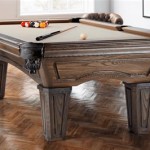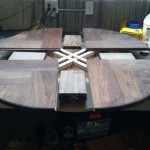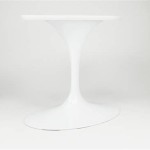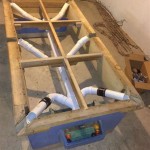Small Farmhouse Table and Bench Plans: A Comprehensive Guide
The enduring appeal of farmhouse furniture lies in its rustic charm, durability, and ability to create a warm, inviting atmosphere within a home. Central to the farmhouse aesthetic is the kitchen or dining room table, often accompanied by benches instead of traditional chairs. A small farmhouse table and bench set offers a practical and stylish solution for smaller spaces, making it an ideal project for woodworking enthusiasts of various skill levels. Understanding the key elements of these plans is crucial for a successful build.
This article provides an in-depth examination of small farmhouse table and bench plans, covering crucial aspects such as design considerations, material selection, construction techniques, and finishing options. The goal is to equip readers with the knowledge necessary to confidently undertake the construction of their own small farmhouse table and bench set.
Key Point 1: Design and Planning Considerations
Before embarking on the construction process, careful consideration must be given to the overall design and specific dimensions of the table and benches. These decisions will directly influence the functionality and aesthetic appeal of the finished product.
Table Size and Shape:
The primary determinant of table size is the available space. Measure the intended location precisely and consider leaving adequate clearance for movement around the table. Common table shapes include rectangular, square, and round. A rectangular table is often the most practical choice for accommodating multiple individuals, while a round table facilitates easier conversation. A small rectangular table is the most common size for smaller spaces, typically ranging from 36 to 48 inches in length and 24 to 30 inches in width. Square tables usually range from 30 to 40 inches on each side.Bench Sizing and Style:
The benches should correspond proportionally to the table size. A general rule of thumb is to make the bench approximately two-thirds the length of the table. For a 48-inch table, a 32-inch bench would be suitable. Consider the seating capacity of each bench. A single bench can generally accommodate two adults comfortably. The style of the bench should complement the table. Common bench styles include simple plank benches, benches with aprons, and benches with angled legs.Table Leg Design:
The table legs contribute significantly to the overall aesthetic of the farmhouse table. Options range from simple, straight legs to more elaborate turned legs or trestle-style supports. Straight legs are the easiest to construct and are well-suited for a minimalist farmhouse design. Turned legs add a touch of elegance, while trestle legs provide a rustic and sturdy appearance. Leg thickness should be proportional to the table size; thicker legs are better suited for larger tables.Joinery Methods:
Selecting appropriate joinery methods is critical for ensuring the structural integrity and longevity of the table and benches. Common joinery techniques for table construction include mortise and tenon joints, pocket hole joinery, and biscuit joints. Mortise and tenon joints offer superior strength but require more advanced woodworking skills. Pocket hole joinery is a simpler and faster alternative, though it may not be as visually appealing if the holes are not concealed. Biscuit joints provide added stability and alignment during glue-up.Plan Detailing:
A detailed plan should include accurate dimensions, material lists, and step-by-step instructions. The plan should also specify the type and quantity of fasteners required. Clear and concise diagrams are essential for visualizing the construction process. Several online resources offer free or paid farmhouse table and bench plans. Carefully review multiple plans before selecting one that aligns with your skill level and design preferences.Key Point 2: Material Selection and Preparation
The choice of materials significantly impacts the appearance, durability, and cost of the farmhouse table and bench set. Selecting appropriate materials and preparing them properly is essential for achieving optimal results.
Wood Species:
Common wood species for farmhouse furniture include pine, oak, maple, and reclaimed wood. Pine is a relatively inexpensive and readily available option, but it is also softer and more prone to dents and scratches. Oak is a durable and visually appealing hardwood that is well-suited for high-traffic areas. Maple is another durable hardwood that offers a smooth, even grain pattern. Reclaimed wood adds character and a rustic aesthetic to the table, but it may require more preparation to ensure its stability and integrity.Lumber Dimensions:
Standard lumber dimensions are typically specified in nominal sizes, which differ from the actual dimensions. For example, a 2x4 board actually measures 1.5 inches by 3.5 inches. Ensure that the lumber dimensions specified in the plan match the actual dimensions of the lumber you purchase. Common lumber sizes used for farmhouse tables include 4x4s for legs, 2x4s for aprons and supports, and 1x6s or wider for the table top and bench seats.Material Preparation:
Before commencing construction, the lumber must be properly prepared. This includes inspecting the lumber for defects such as knots, cracks, and warping. Select lumber that is straight and free from significant imperfections. Milling the lumber to the correct dimensions is crucial for ensuring accurate and consistent joints. This typically involves using a jointer to flatten one face and a planer to bring the opposite face parallel. The lumber should then be cut to the required lengths using a miter saw or table saw.Hardware Selection:
Choose high-quality hardware that is appropriate for the intended use. This includes screws, bolts, and any decorative hardware such as hinges or handles. Screws should be long enough to provide adequate holding power but not so long that they protrude through the wood. Consider using screws with a self-tapping design to prevent splitting the wood. Bolts are typically used for attaching table legs to the apron or trestle. Decorative hardware should complement the overall style of the table and benches.Safety Considerations:
When working with power tools, always wear appropriate safety gear, including safety glasses, hearing protection, and a dust mask. Ensure that the work area is well-ventilated. Familiarize yourself with the operating instructions for each tool before use. Take precautions to prevent accidents and injuries.Key Point 3: Construction Techniques and Finishing
The construction process involves assembling the various components of the table and benches using appropriate joinery techniques and fasteners. The finishing process enhances the appearance of the wood and protects it from damage.
Table Top Assembly:
The table top can be constructed from multiple boards joined together edge-to-edge. Before joining the boards, ensure that the edges are straight and square. Use wood glue and clamps to secure the boards together. Allow the glue to dry completely before removing the clamps. Alternatively, prefabricated butcher block countertops can be used for the table top, simplifying the construction process.Apron and Leg Attachment:
The table apron provides structural support and connects the legs to the table top. The apron can be attached to the table top using screws or glue and screws. The legs can be attached to the apron using mortise and tenon joints, pocket hole joinery, or bolts. Ensure that the legs are aligned properly and securely fastened.Bench Construction:
The benches are typically constructed using a similar approach to the table. The bench seat can be made from a single board or multiple boards joined together. The legs can be attached to the bench seat using screws or glue and screws. Consider adding an apron to the bench for added support and stability.Sanding and Preparation:
Before applying the finish, the entire table and bench set must be thoroughly sanded to remove any imperfections and create a smooth surface. Start with a coarse grit sandpaper (e.g., 80 grit) and gradually progress to finer grits (e.g., 120 grit, 220 grit). Remove all sanding dust with a tack cloth or vacuum cleaner.Finishing Options:
Several finishing options are available for farmhouse furniture, including stain, paint, varnish, and oil. Stain enhances the natural grain of the wood and adds color. Paint provides a solid color finish and can be used to create a distressed or antiqued look. Varnish provides a durable and water-resistant finish. Oil provides a natural and matte finish. Consider the desired aesthetic and the level of protection required when selecting a finish. Apply the finish according to the manufacturer's instructions. Multiple coats are typically required for optimal results. Allow each coat to dry completely before applying the next coat.Distressing Techniques:
To achieve a more authentic farmhouse look, consider using distressing techniques such as sanding edges, creating dents and scratches, or applying a crackle finish. These techniques add character and a sense of age to the furniture.By carefully considering the design, material selection, construction techniques, and finishing options, individuals can successfully construct a small farmhouse table and bench set that is both functional and aesthetically pleasing, adding a touch of rustic charm to their home.

Diy Farmhouse Bench Love Grows Wild

Diy Farmhouse Bench Love Grows Wild

Diy Farmhouse Bench Love Grows Wild

Diy Farmhouse Bench Love Grows Wild

Diy Farmhouse Bench Archives Build It Thrifty

How To Build A Farmhouse Dining Table And Benches Diy Plans Jeff S Projects

Diy Farmhouse Dining Table Free Plans And Tutorial

How To Build A Dining Table H2obungalow

Farmhouse Dining Room Table With Bench

Diy Farmhouse Bench Love Grows Wild








